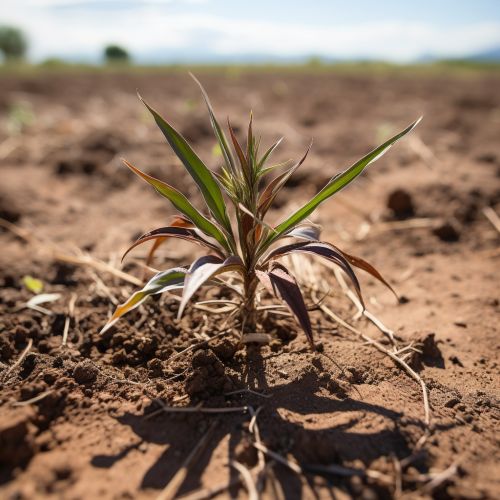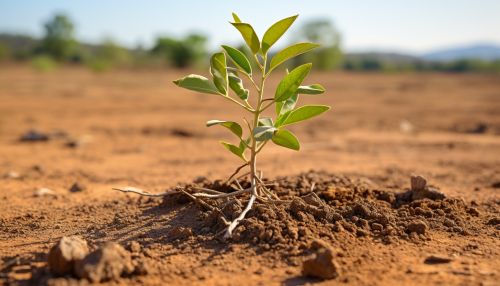Plant Drought Response
Introduction
Plants, as sessile organisms, have developed a range of strategies to cope with environmental stressors such as drought conditions. These strategies, collectively referred to as the plant drought response, involve a complex interplay of physiological, biochemical, and molecular processes that allow the plant to survive and reproduce under water-limited conditions.
Physiological Responses


One of the most immediate physiological responses to drought is a reduction in photosynthetic activity. This is primarily due to the closure of stomatal pores on the leaf surface, which conserves water but also limits the diffusion of carbon dioxide into the leaf. This leads to a decrease in the rate of photosynthesis and, consequently, a reduction in plant growth and productivity.
Another important physiological response is the alteration of root architecture. Under drought conditions, many plants exhibit a shift in root growth towards deeper soil layers, where water availability is often higher. This is achieved through changes in the direction and rate of root growth, as well as modifications to root morphology, such as increased root hair density and length.
Biochemical Responses
At the biochemical level, plants respond to drought by accumulating various solutes that help to maintain cell turgor and protect cellular structures. These include osmolytes such as proline, glycine betaine, and sugars, which can increase the osmotic potential of the cell and help to retain water.
Plants also produce a range of protective proteins and enzymes in response to drought. These include heat shock proteins, which help to prevent protein denaturation and aggregation, and antioxidant enzymes, which protect against oxidative damage caused by reactive oxygen species.
Molecular Responses
The molecular responses to drought involve changes in gene expression that are mediated by various transcription factors. These transcription factors bind to specific sequences in the promoter region of drought-responsive genes, leading to their activation or repression.
One of the key transcription factors involved in the plant drought response is DREB (dehydration-responsive element binding protein). DREB binds to the DRE (dehydration-responsive element) in the promoter of many drought-responsive genes, leading to their activation.
Plant Breeding for Drought Tolerance
Plant breeders have long sought to improve the drought tolerance of crop species through traditional breeding methods. However, the complex nature of the plant drought response, which involves many genes and pathways, has made this a challenging task.
More recently, advances in genomics and molecular biology have opened up new possibilities for improving drought tolerance. For example, through genetic engineering techniques, it is now possible to introduce drought-responsive genes or transcription factors into crop species, potentially enhancing their drought tolerance.
Conclusion
The plant drought response is a complex and multifaceted process that involves a range of physiological, biochemical, and molecular changes. Understanding these responses is crucial for improving the drought tolerance of crop species and ensuring food security in the face of increasing water scarcity.
